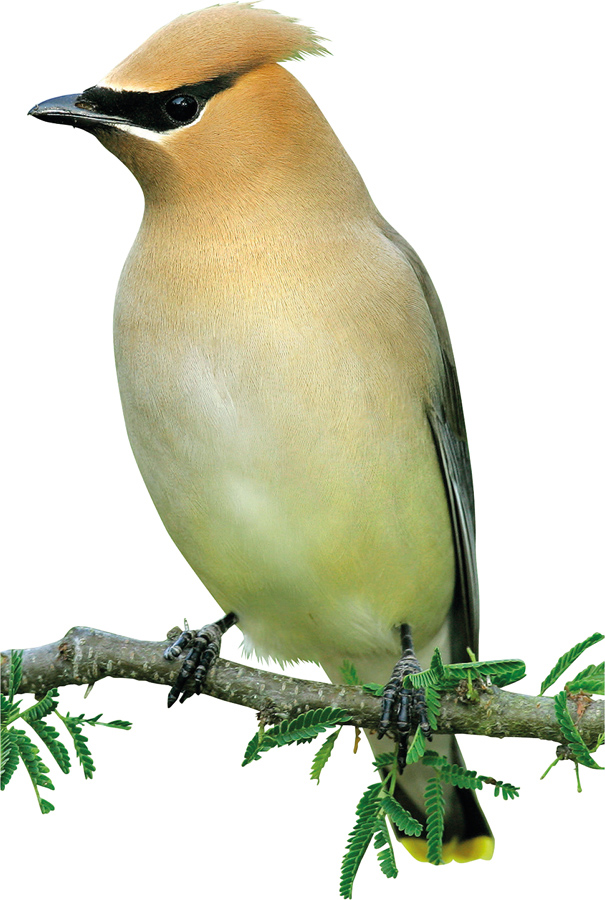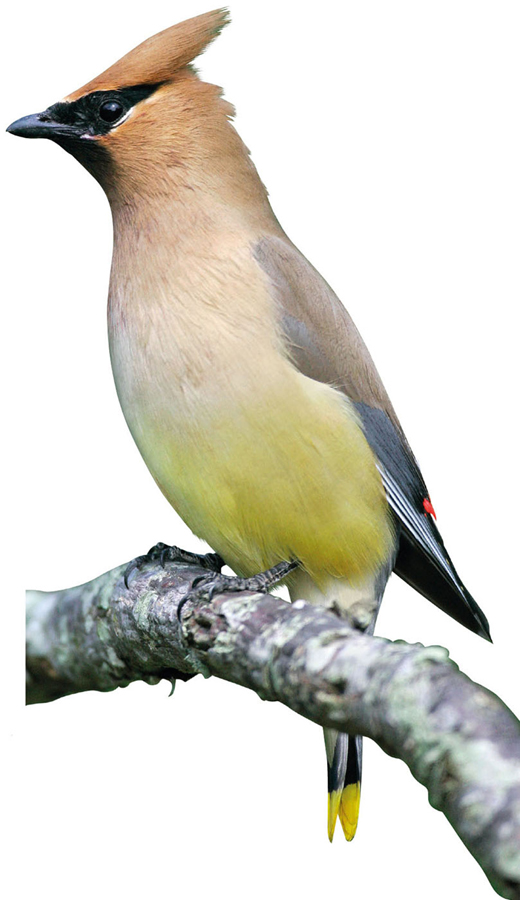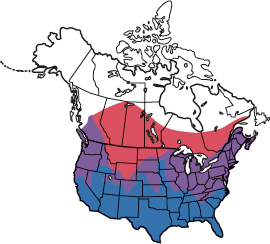Bombycilla cedrorum

adult
Superficially similar to the Bohemian Waxing, the Cedar Waxwing can be distinguished by subtle plumage differences. The sexes are similar. Adults have orange-buff plumage (pinkish buff in Bohemian), palest on the underparts and white on the undertail (chestnut in Bohemian). The dark wings have white inner margins to the tertials and red wax-like feather projections on the secondaries. The head has a crest, and a dark mask framed by white lines. The rump is gray and the dark tail has a yellow tip, subtly broader in males than in females. Juveniles are gray-buff; by winter they are similar to an adult but lack the red waxy wing projections.
The Cedar Waxwing is present in its northern summer breeding range mainly from May to September. Outside the breeding season birds move south and form roaming flocks. It is present year-round across much of central North America, but its winter range also extends south into Mexico. Winter flocks are nomadic, wandering in search of berry bushes.

adult

adult
FACT FILE
LENGTH 7.25 in (18.5 cm)
FOOD Invertebrates in summer; berries at other times
HABITAT Open woodland
STATUS Present year-round across much of central North America; common summer visitor farther north, and widespread in winter farther south
VOICE Does not sing. Calls include a buzzing tzeee note
![]()
